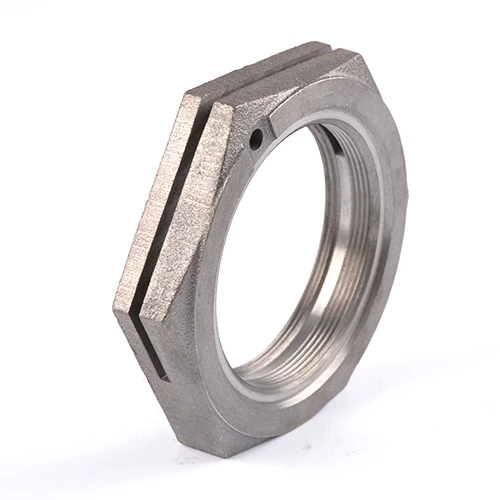Iron casting is a traditional Manufacturing process that has been done for thousands of years where Iron is melted and poured into molds to create the desired shape. Iron casting is commonly seen in car parts to home ware, it can be incorporated into various industries. Thanks to changes in technology, the future of iron casting is looking bright: new trends are emerging and technologies have been improved similarly. New Iron Casting Technologies Foundries are forever looking for advancements in state-of-the-art to better compete with producing quality castings. 3D printing, simulation techniques and advanced robotics are some of the latest generation technologies deployed for iron casting. This approach of 3-D printing has immensely increased the accuracy along with turnaround time for casting production. The molds can have complex, intricate designs and engineers can easily create those on the computer before 3D printing them. With this technology, the time of usage gets saved & as it waste less so iron casting in all becomes very efficient. At the same time, simulation methods are being applied to process optimization for iron casting as well. In foundries this technology assists in deciding the best casting of a piece with minimum wastage and improved quality. This allows engineers to carry out comprehensive simulations, from how they need the castings manufactured like in temperature and melt flow conditions. Innovations Influencing The Future of Iron CastingThe future of iron casting has never looked more exciting than it is today with all these innovation in materials. Novel lightweight, high-strength iron alloys are being developed for targeted applications. In a world of lighter and stronger castings driven by advances in metallurgy. Automation in iron casting is another major trend currently proliferating. We are using robotics to automate pouring, cleaning and finishing tasks. This technology serves manufacturers to raise rates of production whereas decreasing prices however not at the value OF quality or safety. Big data is also being incorporated into the iron casting process as well. Manufacturers have much to gain from big data analytics because it can help them do more with less, while still achieving the same or better outcomes and improved efficiencies. As well, predictive maintenance is employed to remain the downtime of equipment low and increase its productivity. Posted in Green MaterialsTagged green materials, manufacturing industryCompanies everywhere are eyeing the use of eco-friendly solutions and processes. Foundries are trying to go as green by producing the castings in an environmental friendly way. Iron casting can also be done using bio-based resins made from renewable resources like corn and soy. Bio-resin is very popular in this area because it offers energy saving benefits over phenolic based systems, but a majority of manufacturers are still choosing to use traditional chemically set processes which are cheaper specifically for ductile iron production spampered by faster cycle times than other methods available today. This provides an environmentally friendly alternative to petroleum based resins, helping lower greenhouse gas emissions and eliminate the dependance on non-renewable resources. There are green processes also in development to cut down on the waste and energy of iron casting. Improved technologies like vacuum-assisted molding that reduce the molten metal consumed during casting and dry sand molding, which is less water-intensive than traditional wet sand molding with smaller land required for creating waste. The New Ways of Iron Casting Design and ProductionNew ways for design and production in iron casting are becoming more evident, paving the way to smarter manufacturing. A potential solution is known as Additive Manufacturing, where material is laid layer by layer to build a part instead of casting. Well, with additive manufacturing it is possible to produce incredibly detailed designs that are impossible (or nearly so) with the constraints of traditional casting. The second method includes the introduction of nanomaterials into iron casting. More harder and ductile strong, tough casting of nanaomaterials are being developed. They provide with excellent corrosion and wear resistance as well. Challenges Faced By Iron Casting and Improving Process of Iron SaillingCasting, being a manufacturing technique has its own set of challenges. This is, in essence: the elimination of defects from a final product; Foundries are always trying to optimize their processes in order to avoid defects. Another problem was the time and resources that were necessary to produce castings. Some foundries are adopting lean manufacturing concepts and process optimization strategies to eliminate waste. These challenges are being solved by technological advancement that further progresses iron casting methods. These are all technologies that can help manufacturers increase quality, decrease waste and be more productive. So to sum up, the future of iron casting surely looks promising with new trends in making and fine developing technologies. 3D printing, green materials and processes as well as innovative design approaches will not only drive the next technological step changes in iron casting but also shape its future. Emerging advancements in metallurgy, automation and big data analytics are enabling manufacturers to overcome these challenges by casting high-quality parts more efficiently. Iron casting will continue to be an important and timeless process due to the inevitable evolution of the manufacturing industry.

 EN
EN
 CS
CS
 DA
DA
 NL
NL
 FI
FI
 FR
FR
 DE
DE
 EL
EL
 IT
IT
 JA
JA
 KO
KO
 PL
PL
 PT
PT
 RU
RU
 ES
ES
 TL
TL
 ET
ET
 TH
TH
 MS
MS



